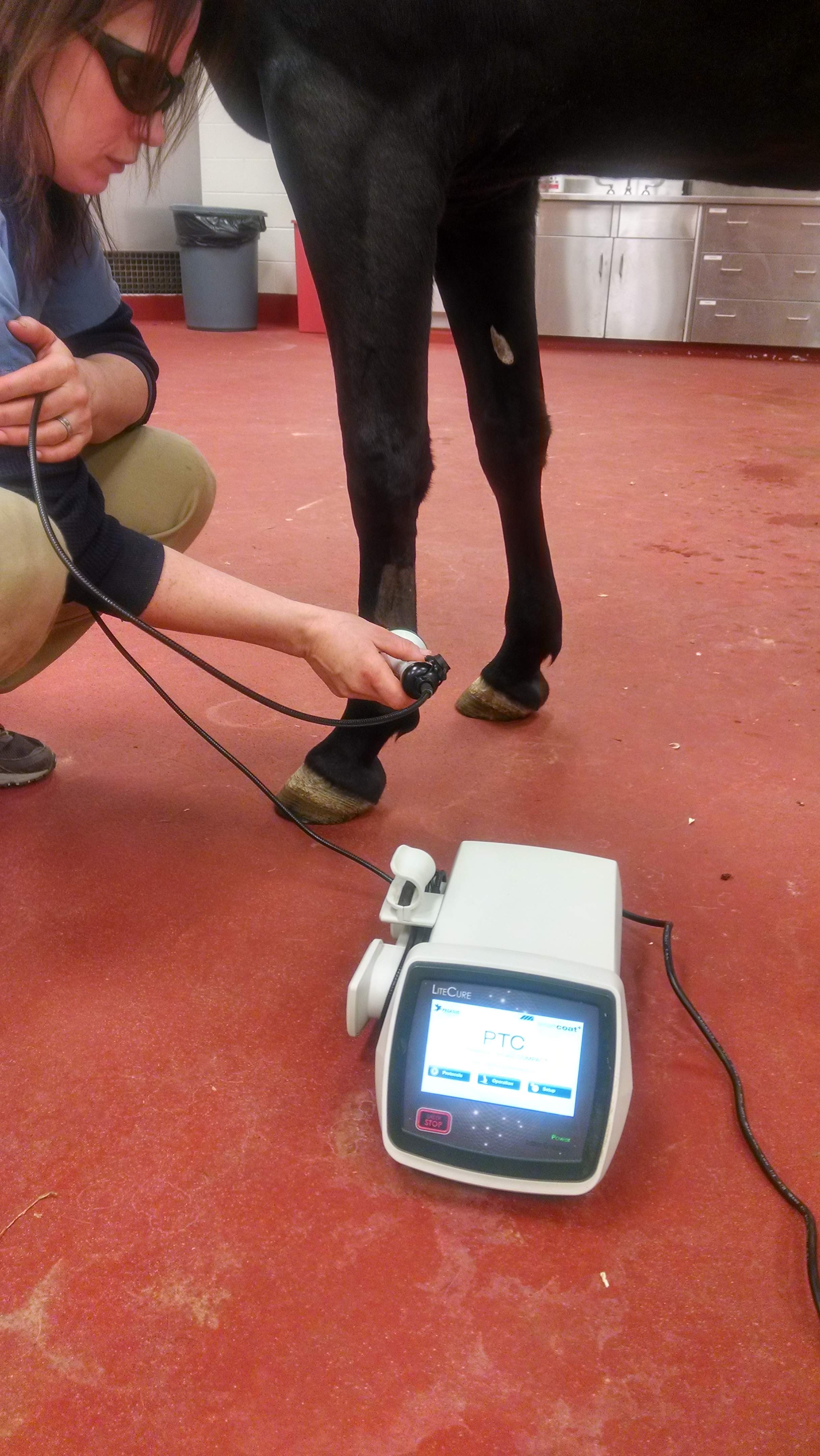The Power of Equine Therapy for Anxiety, PTSD, and Psychological Recovery
The Power of Equine Therapy for Anxiety, PTSD, and Psychological Recovery
Blog Article
Assessing the Effectiveness of Laser Treatment in Horse Treatment for Injury Rehabilitation
The assessment of laser therapy's efficiency in equine injury rehabilitation hinges on multiple factors, including recuperation time, discomfort reduction, and cells regeneration. Veterinarians frequently observe superior outcomes with laser treatment contrasted to traditional techniques, positioning it as an essential element in equine treatment.
Recognizing Laser Treatment
Laser therapy has come to be a crucial device in veterinary medicine, specifically in the therapy of equine conditions. Known for its non-invasive nature and efficiency, laser treatment includes the application of specific wavelengths of light to boost cells repair work and reduce swelling. This restorative modality is increasingly preferred for its capability to accelerate the recovery process in steeds enduring from a range of bone and joint injuries and persistent conditions.
The primary system behind laser treatment is its capability to boost cellular functions. When laser light penetrates the skin, it is taken in by mitochondria, the giant of cells, which leads to boosted manufacturing of adenosine triphosphate (ATP) This biochemical energy increase facilitates cellular fixing and regeneration. Furthermore, laser treatment advertises vasodilation, improving blood circulation and oxygen delivery to damaged cells, hence accelerating recuperation.
In equine medicine, laser therapy is especially valuable for problems such as tendonitis, osteoarthritis, and wound healing. The technique is lauded for its pain-relieving residential or commercial properties, enabling equines to gain back flexibility and feature extra rapidly. Vets also appreciate its minimal negative effects compared to other treatment modalities, making it a reputable and risk-free choice for equine treatment.

Exactly How Laser Therapy Works

Upon absorption, these photons activate a series of biochemical changes, boosting mitochondrial function and leading to increased adenosine triphosphate (ATP) manufacturing. This increase in ATP accelerates mobile metabolic process, promoting tissue repair service and regeneration. Additionally, laser treatment modulates inflammatory feedbacks by impacting cytokine levels and minimizing oxidative tension, thereby relieving discomfort and swelling.
Another substantial aspect of laser treatment is its role in boosting microcirculation. The therapy advertises vasodilation, improving blood circulation and oxygen delivery to broken cells (Equine Therapy). This assists in the elimination of cellular particles and supports the expansion of fibroblasts and collagen synthesis, essential for injury recovery
Scientific Proof
The effectiveness of laser treatment in equine treatment has been substantiated with numerous clinical research studies, showcasing its therapeutic prospective throughout a series of conditions. Numerous controlled trials and empirical studies have recorded substantial improvements in tissue repair service, discomfort reduction, and general recovery timelines. For instance, a study carried out by Turner et al. (2012) showed that steeds treated with low-level laser look at this web-site therapy (LLLT) for tendon injuries displayed increased recovery compared to those receiving traditional therapies. The research study highlighted a significant decrease in swelling and boosted collagen development.
Likewise, research study by Johnson and associates (2015) concentrated on equine muscle injuries, revealing that laser treatment dramatically quickened muscular tissue fiber regrowth and minimized muscle mass stiffness. These searchings for were corroborated by histological evaluations revealing improved muscle mass cells organization. Additionally, clinical analyses have actually shown that laser therapy can ease chronic conditions such as osteo arthritis. A research study by Smith et al. (2018) reported that horses with osteoarthritic joints experienced remarkable pain alleviation and boosted variety of activity complying with a regimen of laser treatment sessions.
Vet Insights

Veterinarians likewise appreciate the flexibility of laser therapy. It can be utilized for a large range of conditions, from shallow wounds to deeper musculoskeletal injuries. Dr. Emily Brown highlights its energy in dealing with problems like tendonitis and osteo arthritis, where traditional therapies frequently fall short. She points out that laser treatment can be customized to the certain requirements of each equine, guaranteeing optimal outcomes.
Moreover, vets value the capability to integrate laser treatment with various other treatment methods. This multimodal technique can improve overall therapy effectiveness, providing a thorough remedy for equine recovery. Such endorsements from skilled experts underscore the expanding acceptance and application of you can try here laser treatment in equine medication.
Practical Considerations
A vital element of implementing laser treatment in equine treatment entails understanding the sensible considerations that guarantee its effectiveness and safety. Firstly, it is essential to pick the suitable laser tool, as different kinds differ in wavelength, power, and infiltration depth. Equine Therapy. Vets should be fluent in these parameters to customize therapy protocols successfully to each injury type
In addition, the frequency and duration of laser treatment sessions require careful planning to take full advantage of healing benefits while minimizing any type of prospective damaging effects. Constant surveillance of the horse's reaction to treatment can assist necessary adjustments in the therapy program. Developing a secure and controlled environment during therapies is likewise essential to avoid unexpected direct exposure to laser exhausts, which can damage both the horse and the handler.
Training and accreditation of workers providing laser treatment are vital to make certain correct strategy and to promote safety standards. Additionally, maintaining accurate records of each session, consisting of laser setups and observed outcomes, is important for examining the general efficiency of the treatment and for making data-driven decisions.
Conclusion
Laser therapy has actually emerged as an effective technique in equine injury recovery, offering significant advantages in healing time, pain alleviation, and tissue recovery. For ideal outcomes, constant monitoring and customized treatment methods remain essential in leveraging the complete potential of laser treatment in equine treatment.
Report this page